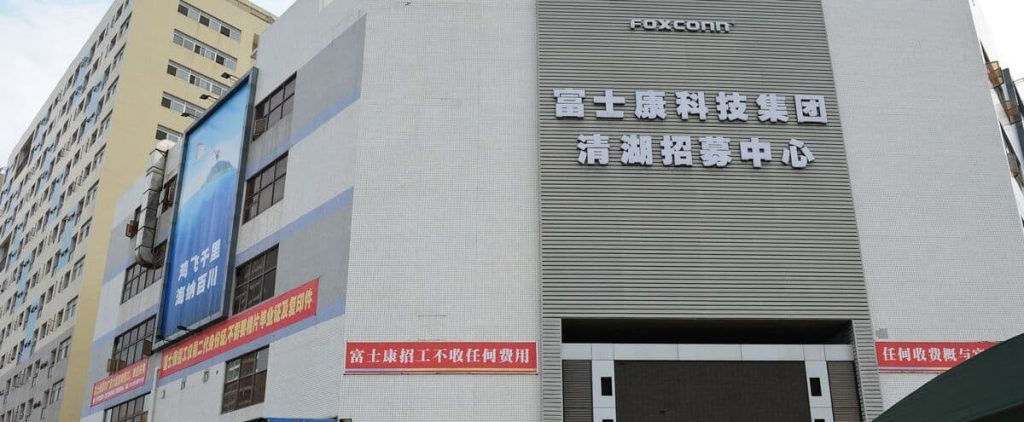
Beijing | Chinese authorities on Wednesday quarantined 600,000 people living around a factory that makes the majority of the world’s iPhones for a week, after flights of worried workers discovered an outbreak of COVID-19.
• Also Read: Emergency control at Disneyland Shanghai
• Also Read: China: Covid outbreak at largest iPhone factory
The move comes as China, the last major economy to apply a strict health policy, faces a surge in Covid cases on its territory as winter approaches.
According to a press release from local authorities, the economic zone around Zhengzhou Airport (Center), where Taiwanese group Foxconn’s factory is located, has been restricted for seven days.
The factory, which employs more than 200,000 people, has been affected by positive cases of COVID-19 since mid-October.
The place is 600 km southwest of Beijing. Foxconn told AFP on Wednesday that it would “continue to operate in a closed circuit”.
According to analysts, the industrial complex, which has three factories, assembles 80% of the iPhone 14, the latest model from American giant Apple.
In order to become less dependent on China, it announced in September that it would outsource some of its production to India, where about 3% of iPhones are made, in 2021.
Contacted by AFP, Apple did not immediately respond.
“chaotic”
Footage on social media showed employees, who normally live at the site year-round, fleeing the Zhengzhou plant, some jumping over a fence.
In videos filmed on Tuesday and handed over to AFP by a witness, employees drag suitcases along the road to help the group return home.
“People who have tested positive coexist with negative people,” a 30-year-old employee told AFP on condition of anonymity, calling crisis management “chaotic.”
He said that it is not even known whether those who have fever will get medicine or not.
This employee chose to stay on site in “(his) accommodation” made available by Foxconn, but not “commuting to work”.
On the other hand, “I’m not going home because I’m afraid of bringing the virus back” to my family.
As of November 9, local authorities have advised the district’s 600,000 residents “not to leave their homes” unless there is a compelling reason.
Only “essential businesses” can continue to operate, while the rest must introduce teleworking.
Local daily Dahe Daily promised officials would “fully disinfect” the Foxconn site, including employee dormitories.
They can only go out after seven consecutive days of negative tests.
China’s zero-Covid policy, which has been in place for nearly three years, has resulted in repeated detentions, large-scale PCR tests and mandatory detention on arrivals from abroad.
Increasing cases
To keep its employees, Foxconn announced on Tuesday that it would quadruple the daily bonus for work attendance, or 400 yuan (about 55 euros).
Staff will receive an additional bonus of up to 15,000 yuan (2,075 euros) if they stay in November.
Foxconn admits it faces a “long battle” against Covid.
But the company did not specify the number of employees who tested positive or were limited to its Zhengzhou site.
A factory official told the weekly China Newsweek that the situation was “under control”.
The number of positive cases is rising in China, with more than 2,000 new positive cases announced for the third day in a row on Wednesday.
The number of people in quarantine in the country is now the highest since it contained Shanghai in the spring, firm Capital Economics said, with outbreaks detected in more than 50 cities.
In the south, the semi-autonomous territory of Macao announced routine screening of its 680,000 residents on Tuesday after finding some cases.
In Canton (South), partial lockdowns were decreed in several districts on Monday.
At the other end of the country, outbreaks have been detected in northeastern towns near the border between Russia and North Korea.





More Stories
Allegations of corruption Qatar warns of ‘negative impact’ of European measures
USA: Famous “Hollywood cat” euthanized in Los Angeles
The campaigner who called for the shooting of Ukrainian children has not been charged